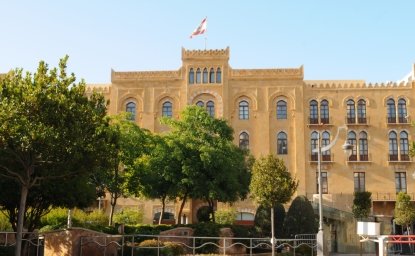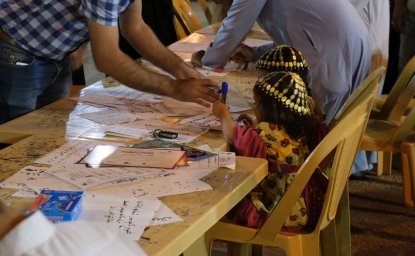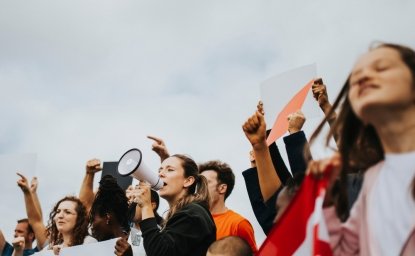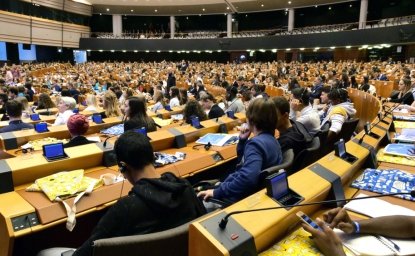
A blog of the Middle East Women's Initiative
Who protects you from the ‘protector’? Many countries in the Middle East have failed to address this inherent paradox.
As a blanket term, ‘Women’s rights’ has become part of almost all political and institutional agendas around the world. But as we deconstruct this increasingly tokenized term, we can see that ‘women’s rights’ means different things in different contexts. Scholars, activists, and writers have all highlighted the need to overcome the use of ‘woman’ as a homogenous category and women’s rights as a monolithic concept. There is a dire need to understand that a woman does not just suffer because of her gender, but also due to myriad other factors such as race, class, ethnicity, and religion; the concept of “intersectionality” as coined by Kimberlé Crenshaw encompasses this notion.
It is this concept of intersectionality that helps us understand that violence against women (VAW) is perpetuated and experienced differently by different groups of women in the Middle East. Several factors are at play here, including persistent patriarchal structures, gendered norms around masculinity and femininity, and problematic identity politics. More importantly there is a lack of appropriate laws and policies to prevent gender-based violence (GBV) or to help victims and punish the perpetrators. The tragic irony of this dire issue is that GBV and VAW are conveniently shoved under the ‘private’ realm or ‘family matters’; it is commonly said that this belongs to asrar albeit (secrets of the house). Such narratives more than ever require understanding the politics of private and public binaries and politicization of the ‘family’ as a national institution – which, rather than protecting women, is leaving them vulnerable and fully dependent on the perpetuator.
The dilemma is this: what to do when your protector is the one who harms you? In other words, who protects you from the ‘protector’? Many countries in the Middle East have failed to address this inherent paradox.
It is also necessary to realize the GBV occurs across genders, men too are often exposed to violence at early ages or later in households where gender norms require them to act a certain way to appear more of a ‘man’. GBV, therefore, is not just a woman’s issue, it is a structural, systematic, and legal issue which influences both men and women. Violent men and women are raised by a whole system that enables and prepares them to act a certain way.
Women in the Middle East face violence on multiple levels and from different institutions: family members, abusive marriages, academic institutions, and workplaces among others. But the system that has failed women in terms of protections and prevention has also made certain groups of women invisible to the system, such as non-citizens, blue-collar migrant workers, domestic staff, and stateless women. Abuse of women in these groups is not even recognized by the state and they often have nowhere to report. This does not mean that other groups of women can easily report GBV, it just shows that the issue is multi-faceted and multi-layered.
Protection measures are also almost non-existent; there is a lack of protection and rehabilitation centers to provide women in violent households with safe housing and treatment. The mechanisms for reporting such cases are weak and ill equipped. Women are discouraged from reporting GBV to police, which is a patriarchal institution. Women are told by policemen to go home, and some cases are sent back to their perpetuators against their will. The system is set up to favor the patriarchy and to silence women. Of course, this is not to say that progress hasn’t been made, but one cannot overestimate the little progress in comparison to the enormity of the issue.
GBV and VAW are often omitted from dialogue around women’s rights in the Middle East. This plays into the idea of promoting certain privileged women icons as representations of progress, modernity and new national identities that speak to the neo-orientalist view of the West.
Therefore, to look beyond politics and image-building, tackling GBV is beyond an easy task. To find any solution we have to look at the roots and not just on the surface. But we can’t wait any longer. Women continue to suffer in silence or die - the exact numbers of such cases will never be known because these are never accurately reported. If a woman cannot even feel safe in her own house, what progress have we made in human rights?
Author


Middle East Program
The Wilson Center’s Middle East Program serves as a crucial resource for the policymaking community and beyond, providing analyses and research that helps inform US foreign policymaking, stimulates public debate, and expands knowledge about issues in the wider Middle East and North Africa (MENA) region. Read more


Middle East Women's Initiative
The Middle East Women's Initiative (MEWI) promotes the empowerment of women in the region through an open and inclusive dialogue with women leaders from the Middle East and continuous research. Read more

Explore More in Enheduanna
Browse Enheduanna
Women are the Catalysts for Change in Lebanon

How Education Can Empower Young Women in MENA


